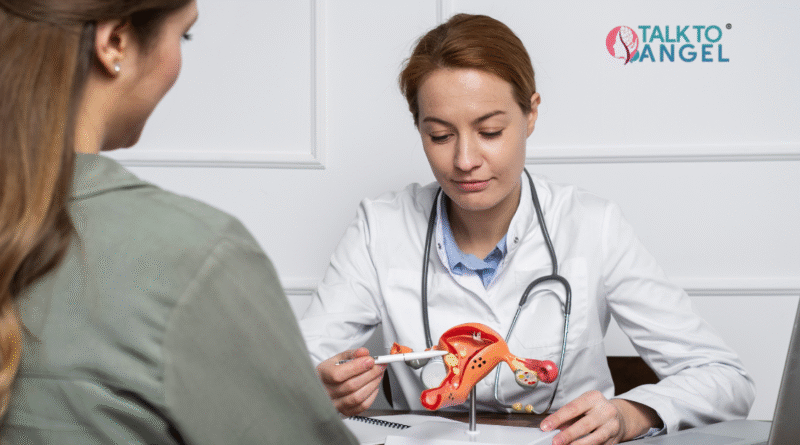Polycystic Ovary Syndrome: Symptoms, Causes, & Treatment
Polycystic Ovary Syndrome Disease (PCOS)—also referred to as polycystic ovarian disease—is one of the most common endocrine and metabolic disorders among reproductive‑age individuals. Globally, it affects an estimated 6–13% of this population, with up to 70% remaining undiagnosed. The syndrome is characterized by three primary features: hyperandrogenism (elevated male hormones), ovarian dysfunction (irregular or absent ovulation), and polycystic ovarian morphology—though not all individuals display cystic ovaries.
Polycystic Ovarian Disease Symptoms
Symptoms of Polycystic Ovary Syndrome Disease vary widely but often include menstrual irregularities—ranging from infrequent periods to amenorrhea—due to disrupted ovulation. Hyperandrogenism commonly manifests as hirsutism (excess facial or body hair), acne, and hair thinning or male-pattern baldness. Metabolic disturbances such as abdominal obesity, insulin resistance, and increased risk of type 2 diabetes and cardiovascular disease also frequently accompany PCOS. Emotional symptoms—depression, anxiety, low self‑esteem, and poor body image—are more prevalent, with mental health disorders like bipolar disorder and eating disorders also observed.
Polycystic Ovary Disease Causes
The Polycystic Ovary Disease Causes are multifactorial. Insulin resistance plays a central role, present in about 50–80% of individuals with PCOS, leading to elevated insulin levels that promote androgen production and reduce sex hormone-binding globulin, worsening symptoms. Genetic and environmental elements, such as family history, diet, lifestyle, obesity, and even gut microbiota dysbiosis, also contribute substantially. Chronic low‑grade inflammation and pollutants like endocrine‑disrupting chemicals may exacerbate dysfunction. Additionally, stress triggers the hypothalamic–pituitary–adrenal axis, increasing cortisol and insulin resistance, which further complicates hormonal balance in PCOS.
Difference Between Polycystic Ovaries and PCOS
It’s critical to differentiate PCOS from polycystic ovaries. The former refers to ovarian ultrasound findings showing multiple small follicles but without clinical or hormonal abnormalities. In contrast, PCOS is diagnosed when at least two of the following criteria are met: hyperandrogenism, ovulatory dysfunction, and polycystic ovarian morphology—known as the Rotterdam criteria.
Polycystic Ovarian Disease Treatment
While PCOS has no cure, polycystic ovarian disease treatment focuses on symptom management and long-term health:
- Lifestyle interventions provide foundational support. Even modest weight loss (5–10%) can improve menstrual regularity, metabolic health, and fertility. Regular physical activity and dietary changes—especially low‑glycemic, low‑sugar, low‑saturated fat diets—confer additional benefits.
- Pharmacological treatments include combined hormonal contraceptives (to regulate cycles and reduce androgens), metformin (for insulin resistance), anti‑androgens like spironolactone, and fertility medications such as clomiphene or letrozole. Surgical interventions like ovarian drilling or assisted reproductive technologies (e.g., IVF) may be used when necessary.
- Supplements and emerging therapies show promise: myo‑inositol, D‑chiro‑inositol, vitamin D, resveratrol, berberine, omega‑3, and alpha‑lipoic acid may improve insulin sensitivity, ovulation, and androgen levels in select individuals GLP‑1 agonists (e.g., liraglutide, semaglutide) are emerging for weight management, metabolic control, and quality of life improvements.
Polycystic Ovarian Disease Pregnancy
While polycystic ovarian disease pregnancy may be delayed due to anovulation, with proper treatment, conception is achievable. One of the main causes of anovulatory infertility is PCOS. Individuals with PCOS face increased risks of miscarriage, gestational diabetes, preeclampsia, and preterm birth; early metabolic and reproductive management supports healthier outcomes. Tailored plans involving lifestyle changes, medications, and fertility treatments are essential to support pregnancy while minimizing complications.
Mental Health Support and Counselling in India
With obvious symptoms and reproductive stress affecting relationships and self-worth, polycystic ovary syndrome can be an emotionally taxing condition to live with. Integrating mental health care is therefore crucial. Resources in India that may support those affected include:
- Online psychiatrist consultation: Accessible, flexible support through tele‑mental‑health platforms.
- Therapists in India / Top psychologists in India: Qualified professionals offering personalized therapy and psychological support.
- Relationship counselling / Marriage counselling / Couple counselling: Helps partners manage the emotional burdens of PCOS together and foster resilience in relationships.
- TalktoAngel (Online counselling): A digital counselling platform offering emotional wellness support and coping strategies.
- Psychowellness Center: A multidisciplinary best mental health wellness clinic in Delhi offering psychology, psychiatry, nutrition, and lifestyle interventions for holistic care.
- Evidence strongly supports the integration of mental health screening in polycystic ovary syndrome assessment—given the elevated rates of depression, anxiety, and eating disorders—and comprehensive treatment plans that include psychological care yield better long-term outcomes.
Conclusion
Polycystic Ovary Syndrome Disease is a complex, lifelong condition involving reproductive, metabolic, psychological, and cosmetic facets. Its hallmark symptoms—irregular menstruation, hyperandrogenism, and insulin resistance—affect physical health, fertility, and emotional well‑being. Although there is no cure, targeted polycystic ovarian disease treatment through lifestyle modification, medical therapies, supplements, and mental health support enables most individuals to manage symptoms and improve quality of life.
PCOS pregnancy is possible and often successful with multidisciplinary care, timely intervention, and emotional support. Encouraging links with online therapy, relationship counselling in Delhi, and in‑person services like those in India (e.g., TalktoAngel, Psychowellness Center) provide critical mental health resources.
Ultimately, the difference between having polycystic ovaries and being diagnosed with polycystic ovary syndrome underscores the importance of a holistic, diagnostic, and individualized approach. With continued research, awareness, and compassionate care, people with polycystic ovary syndrome can lead fulfilling lives, maintain strong relationships, and achieve their fertility and wellness goals.
References
- World Health Organization. (2025, February 7). Polycystic ovary syndrome [Fact sheet]. Retrieved from https://www.who.int/news‑room/fact‑sheets/detail/pol.
- Azziz, R., et al. (2010). Polycystic ovarian syndrome: a complex condition with psychological, reproductive and metabolic manifestations that impacts on health across the lifespan. BMC Medicine, 8(41). https://doi.org/10.1186/1741‑7015‑8‑41 BioMed Central
- Teede, H. J., et al. (2018). Epidemiology, diagnosis, and management of polycystic ovary syndrome. Journal of Clinical Endocrinology & Metabolism, 103(10), 3440–3451. https://pubmed.ncbi.nlm.nih.gov/24379699/ PubMed
- Dokras, A. (2017). The economic burden of polycystic ovary syndrome: a systematic review. Journal of Clinical Endocrinology & Metabolism, 102(10), 3657–3668. [For context, mental health impacts.] NCBI
- Gil-Loyzaga, P., et al. (2022). Polycystic ovary syndrome: pathophysiology, presentation, and treatment with emphasis on adolescent girls. Journal of Clinical Endocrinology & Metabolism, 107(6), 1631–1640. https://www.ncbi.nlm.nih.gov/pmc/articles/PMC6




